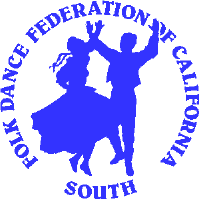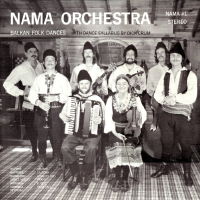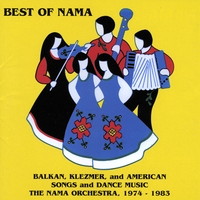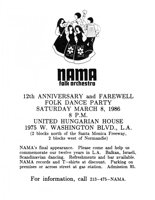
|
Folk Dance Federation of California, South, Inc.
By Dick Oakes |
THIS IS HISTORICAL INFORMATION ONLY
CLICK AN IMAGE TO ENLARGE
David Owens says:
 "Around 1970, Miamon Miller and I, both musicians in AMAN Folk Ensemble, started playing some other jobs, including street music. In 1972 we were arrested in Westwood Village for "carrying on a business with no license!" The American Civil Liberties Union (ACLU) took our case. We lost the trial and the appeal, but persuaded the City Council to exempt street musicians, thus making Westwood the mecca it became for street acts! (We were not thrown in jail! We were on probation for a year.)
"Around 1970, Miamon Miller and I, both musicians in AMAN Folk Ensemble, started playing some other jobs, including street music. In 1972 we were arrested in Westwood Village for "carrying on a business with no license!" The American Civil Liberties Union (ACLU) took our case. We lost the trial and the appeal, but persuaded the City Council to exempt street musicians, thus making Westwood the mecca it became for street acts! (We were not thrown in jail! We were on probation for a year.)
We also played fairly regularly outside the Art Museum, joined by Andy King. By 1974, we were also playing for folk dances, joined by Neil Siegel and Loretta Kelley. AMAN suggested that we not use their name if they weren't booking the jobs. NAMA (AMAN backwards) was sort of a joke at first, but eventually stuck. When it became known that we were planning to release a long play (LP) record under that name, there were high level discussions to see if we could be persuaded to use the name "AMAN Orchestra" or perhaps "AMAN presents the NAMA Orchestra." It came down to whom had artistic control, and would decide what pieces or arrangements were acceptable, and the answer of course was AMAN. For example, they disapproved of doing "Salty Dog Rag," which we were already planning do, and the talks sort of broke down at that point. (Our "Salty Dog Rag" is wonderful!) Later on, no one really cared. And Tony Shay himself later left to start a group with a name similar to AMAN (the AVAZ International Dance Theatre).
We also found out later that "nama" meant "us" in Serbian, as in "igrajte s nama" ("dance with us"), and "live" in Japanese, as in "nama ōkesutora" ("live orchestra"). How nice!
Trudy Israel and Susie North joined as our singers. They had a wonderful blend, and did most of the vocals on NAMA 1 and 2. For the recordings, we also used Phil Harland, Chris Yeseta, and Mark Levy. All of these performers were also in AMAN.
Meanwhile, Pearl Rottenberg (now Taylor) had interested us in doing Yiddish songs, starting in the early 1970's. By 1974 we were playing weddings and other venues, and working on material for an AMAN Jewish suite that never happened. In 1976 we recorded Di mizinke on NAMA 2, our first klezmer type recording. And in 1978 we released NAMA 3 ("a Yiddishe Nama"), which may have been the second full Yiddish/klezmer record in the 1970's klezmer revival (just after The Klezmorim in 1977). Most Yiddish records available at that time were either operatic singers (like Jan Peerce) with symphony orchestras or folk singers with a guitar. We wanted a sound more like an old world ensemble. To me, that is klezmer, but we didn't use the term, because it was just coming into use then. Before that it mainly meant "musician," and not always in a complimentary way. Traditionally, klezmer music did not include singing, but I feel that it does now.
In the late 1970s, Dan Ratkovich joined, and Barbara Slade and Sue Komoorian became our singers. (Trudy and Susie founded the singing group Nevenka.) They handled not only the Balkan and Yiddish, but also Hungarian, Russian, Hebrew, American, and Latin. I studied Yiddish at UCLA with Janet Hadda. Folk dancing was fading, so we did a lot of klezmer jobs. And in 1982 and 1983 we did two tours for Community Concerts Inc., through nine western states and Canada, performing in towns as large as Boise, Idaho and as small as Thermopolis, Wyoming! We called that program "The Ethnic Connection," because we played a number of American pop songs that started out as ethnic songs. Dan and Loretta did the first tour with us, Stuart Brotman and Agi Ban the second. In the mid 1980s, Stu played regularly, as did Mike Gordon on clarinet.
In 1986 I moved to Ann Arbor, Michigan where I started a new group called The Ethnic Connection (not knowing there was already such a group in Madison, Wisconsin!) To learn about our wonderful CD, Google: "Ethnic Connection CD." The NAMA 5 CD ("Best of NAMA") is out of print. You can download the songs at CDBaby.com or at Amazon, iTunes, and others.) The NAMA 2 LP is still available, but only in full boxes of 25 (at a low price!)."

NAMA Record 1 |

NAMA Record 2 |

NAMA Record 3 |

NAMA Record 4 |

NAMA Record 5 (and CD) |
1986 - Farewell!
